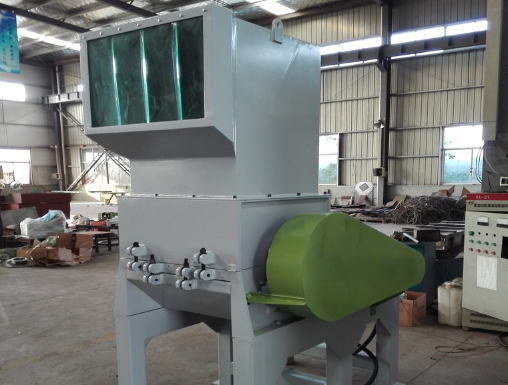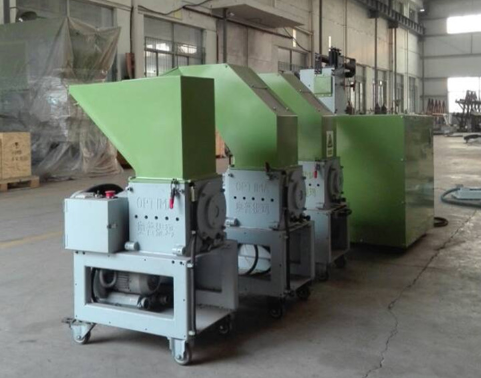Even though granulation may not have been an essential part of the size of the plastic reduction process a few years ago, granulation is an opportunity to provide customers with regrinding and recycled materials in products. However, selecting the right plastics granulator to fit your needs can be challenging. The wrong granulator can even be risky when used in certain environments or situations.
Intended use

The type of granulator that will fit your needs the best will depend on its intended use. Without the proper size granulator and components, plastic that is either too big or too small won't be properly processed, which can result in higher energy use, additional dust and noise, and increased wear on the knife. To ensure that you select a plastic granulator that fits your intended use, the size of the equipment is an important factor. In order to find the right size granulator, consider these things:
ㆍApplication: There are different demands on the granulator depending on the process, whether it's blow molding, injection molding, extrusion, or recycling.
ㆍMaterial: What type of plastic is being processed? Different plastics may react differently in a granulator.
ㆍFeeding Method: Methods of feeding include manual, conveyor, roll feeding, robot, and others.
ㆍProduct: The granulator may need to be configured differently if bottles or sheets are being processed.
ㆍDimensions: The size and thickness of the product being processed will also come into play.
ㆍCapacity: How much material can be processed per hour?
ㆍScreen Size: What size will the processed material be?
Maintenance
Plastic granulators need to be maintained regularly and thoroughly to ensure a high-quality product and to reduce dust in the material as well as in the air at the facility. There are several reasons why granulator maintenance is challenging and may not be completed as often as it should.
ㆍThe equipment may not be designed with maintenance in mind
ㆍInstruction manuals may be poor or inadequate
ㆍProper maintenance can be time-consuming, resulting in increased downtime.
ㆍIt's simply hard to find proper maintenance services
Maintenance of the granulators knives is an especially challenging task, but it is also one of the more important tasks. When the knives are worn down or improperly spaced, it can result in excess dust and fines. When the machine does have sharp knives, it can improve energy efficiency and cut the material more effectively, helping to reduce dust, tearing of the material, and noise.
A plastic granulator should feature multiple safety switches, power-assisted tilt-back hoppers, rotor locking devices, and screen cradles and screens that are easy to access and remove. Equipment operators should also have a clear visual path in order to inspect the equipment in cases where the granulator needs to be cleaned in between each processing run.

Knife design
There are several factors to consider in terms of knife design in a plastic granulator, including the number of knives, how they are arranged, the tip angle, speed, and sharpness. The overall design of the knives can impact the quality of the final granulate and the efficiency of the equipment.
Knives are typically mounted either on a stationary bed or directly on the rotating rotor. How much space is between these sets of knives will depend on the size and type of plastic being processed. For softer, more ductile materials, a smaller space will increase efficiency and produce a cleaner cut.
ㆍThe angle of the knives also depends on the type of material being processed.
ㆍAn angle that produces a scissor cutting action will help improve throughput while using less horsepower, producing less noise, and reducing dust and fines.
ㆍKnives with low angles and blunt tips are often used for more brittle materials
ㆍKnives with high angles and sharp edges are used for softer materials.
If you need granulates of the same size, a slower knife speed will increase the production of uniform material, lessen noise, and reduce wear on the knives and cutting chamber. A high-speed rotor increases the risk of the material becoming frayed or simply rolling around in the machine.
Rotors
The type of rotor in the granulator will depend on what is being processed. There are four main types of rotors used in plastic granulators:
ㆍOpen: Generally used for heat-sensitive resins or feedstock, open rotors provide the most airflow through the cutting chamber.
ㆍClosed or Solid: In this design, there aren't any spaces between the knives and the shaft, improving the strength of the knife mounting arrangement. This also allows the granulator to cut through thick feedstocks.
ㆍStaggered: Used for cutting heavy materials, staggered rotors are available in both closed or semi-closed configurations.
ㆍStaggered/Segmented: Also used for cutting heavy materials, staggered/segmented rotors increase the number of cuts per revolution.
We are a plastic granulator supplier. If you are interested in our products, please contact us now!















